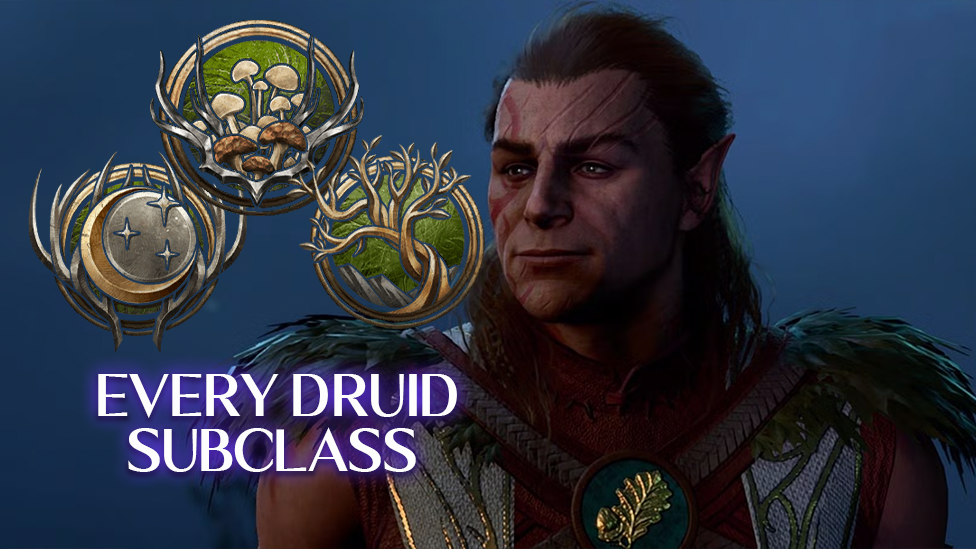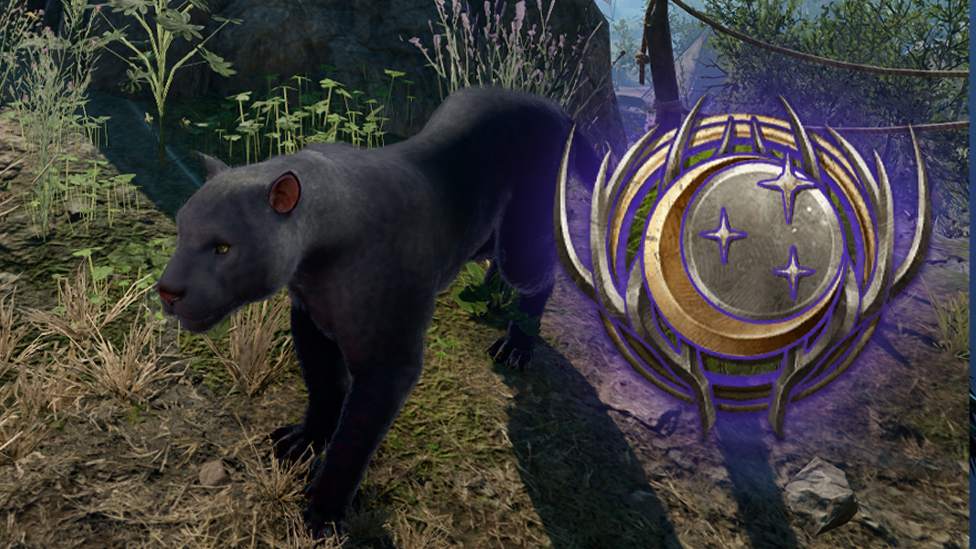Every Druid Subclass in Baldurs Gate 3
Every Druid Subclass in Baldur’s Gate 3

Make Your Own game Server
The Druid class in Baldur’s Gate 3 is. A complex class associated with nature which can provide both attack and protection spells. Druids are famous for their two skills: Wild Shape, used to turn into animals to fight, scout, or simply survive. In addition to this basic function, the decision of which Druid subclass to take greatly defines the character’s playing style, granting them special appendages and powers.
This guide will cover all the available Druid subclasses in Baldur’s Gate 3 to make it easier for you to choose the right one for you.
The Druid Class
Druids are one of the rare classes in the game because they can easily combine the use of spells with Wild Shape. Despite whatever power the player wants, whether it is elemental mastery or fighting like an animal, Druids are top class when it comes to endurance in the wild and versatility in combat, including roles in fight and exploration. Its sub-speciality is the Druid circles, which work as the extension of their bond with nature and prescribe how they engage the world.Every Druid Subclass in Baldur’s Gate 3
There are three main Druid subclasses in Baldur’s Gate 3. Each Circle grants distinct abilities and influences how you play as a Druid.1. Circle of the Land
The Circle of the Land subclass is focused on spellcasting, granting Druids a connection to a specific type of terrain and improving their magical abilities. Circle of the Land Druids can restore spell slots and gain extra spells related to their chosen terrain, such as forests, mountains, or swamps.- Specialty: Enhanced spellcasting and versatility.
- Key Abilities: Natural Recovery, Bonus Spells based on chosen land type.
- Strengths: Spell slot recovery, bonus spells for specific terrain, great for controlling the battlefield with spells.
This subclass is ideal for players who prefer to focus on magic and control the environment. Circle of the Land Druids can cast spells more often and gain additional spells based on the landscape they are attuned to.
2. Circle of the Moon

The Circle of the Moon Druid is all about their Wild Shape ability. Unlike other Druids, they can transform into more powerful animals and use their Wild Shape as a primary combat tool. With stronger forms and improved combat abilities, Circle of the Moon Druids can serve as powerful frontline fighters, taking on tougher enemies while in animal form.
- Specialty: Combat through Wild Shape transformations.
- Key Abilities: Combat Wild Shape, Improved Wild Shape forms (bear, dire wolf, etc.).
- Strengths: Strong animal transformations, durability in combat, excellent front-line fighter while in animal form.
The Circle of the Moon is for players who want to be in the thick of battle, using powerful Wild Shape transformations to dominate enemies. If you enjoy switching between humanoid and animal forms and prefer close combat, this is the subclass for you.
3. Circle of Spores
Circle of Spores is a peculiar subclass that is based on necrotic damage and fungal magic. These Druids can focus Halo of Spores for additional damage, and they can summon spore-based IPs to increase their bullets. Though Wild Shape is still available to them, their class features revolve around dealing Necrotic damage to the targets and manipulating the environment with spores.- Specialty: The necrosis and the era of control on the battlefield.
- Key Abilities: Chrysalis of Spores, Construct of Flesh, Version of the Fungal Infection.
- Strengths: Tissue necrosis, call of fungal creatures, manipulation of terrain by using spores.

Choosing the Right Druid Subclass for Your Playstyle
Selecting the right Druid subclass comes down to how you want to interact with nature and combat. Each subclass has its strengths and focuses, allowing for unique playstyles.Circle of the Land: Mainly suitable for that kind of player who prefers using spells and who needs versatility in the magical aspect of the game.
Circle of the Moon: Designed to be used in combat when a character can turn into a strong animal to take control of the field.
Circle of Spores: Proper for Druids seeking the more aggressive and dealing necrotic damage per battle, focusing on control with darkness magic.
Boost Your Multiplayer Druid Experience
Indeed, Baldur’s Gate 3 encourages players to go on multiplayer missions; thus, choosing the right server is critical. Scalacube provides brand-efficient and configurable servers for your multiplayer campaigns to eliminate lags while moving deep through the BG3 with your characters. Whether you’re a Druid and perform spells or suddenly turn into Wild Shape in the middle of the combat, Scalacube's dedicated servers will be the perfect environment for gaming with friends. Scalacube offers instant setup and around-the-clock support – the hosting of your choice for Druid exploration.FAQs
Can Circle of the Moon Druids Cast Spells While in Wild Shape?
Wild Shape druids of Circle of the Moon cannot cast spells while they are in that form but gain powerful animal forms to be devastating in combat.
What exact spells Circle of the Land Druids can cast?
Landed Druids gain bonus spells depending on the chosen type of terrain, such as forests or swamps, and provide the Circle of the Land Druids with the terrain-based magic.
Is Circle of Spores Druid a Good Choice for Solo Class?
Yes, Circle of Spores Druids can be very powerful in solo play because of their necrotic damage spells and the additional spore attacks they launch, which provide a more lasting type of damage.
Conclusion
In Baldur’s Gate 3, druid is a versatile class that can focus on spells, shapeshifting or necrotic fungal magic. If you want to command the elements and transform them into an animal to fight or deal damage with spores, then each of the Druid subclasses offers a unique and engaging playstyle that lets you feel one with the world.Select your Druid Circle carefully, for being one of the protectors of nature in Baldur’s Gate 3 feels like having quite a lot of freedom and strength on your hands.
Make Your Own game Server
Copyright 2019-2025 © ScalaCube - All Rights Reserved.